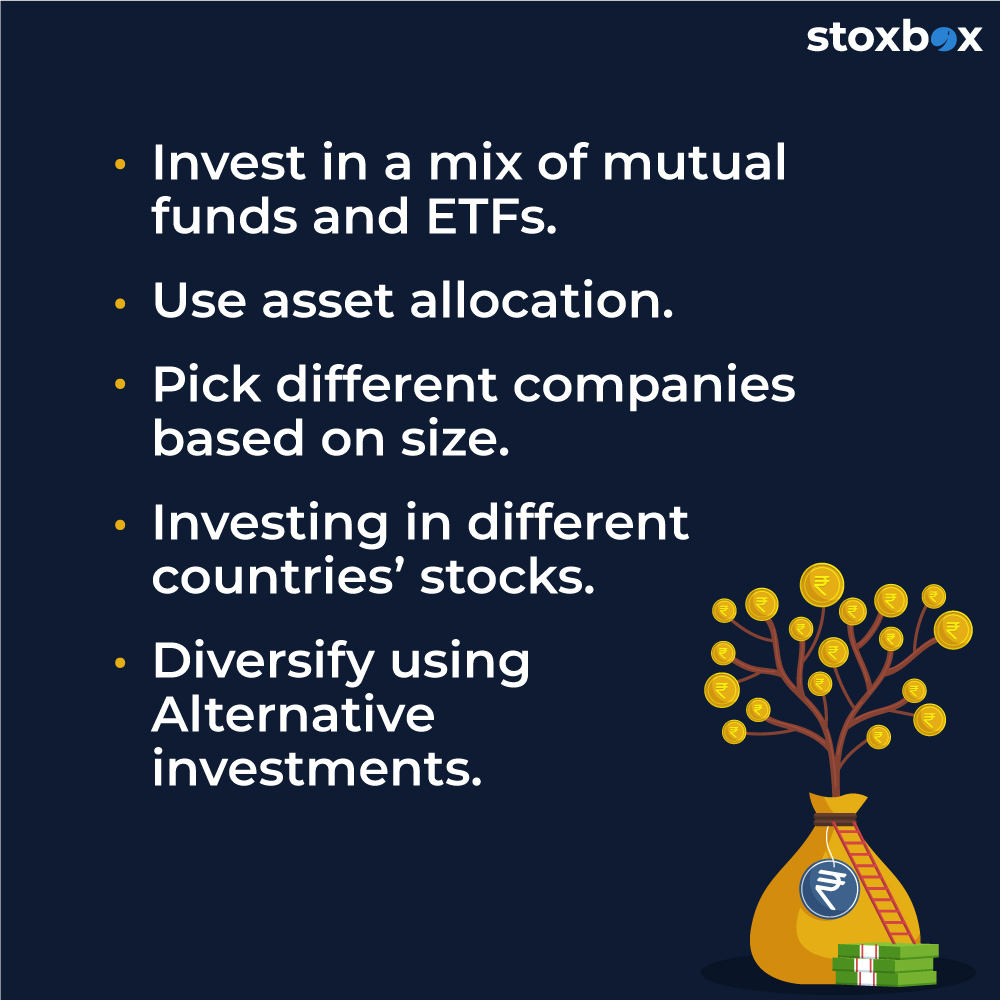Everyone who invests wants to earn higher returns and reduce or eliminate risks. Anyone who doesn’t invest, but has the potential or the will, usually stays back because of the risk factor involved in investments. So, risk in investment is something that is always on every investors’ and potential investors’ mind. However, this risk can be easily reduced by portfolio diversification.
Understanding portfolio diversification
Portfolio diversification is the process of including different assets and financial instruments based on different nature, risk profile, sectors, and other factors. It is a process that is adopted for safe investments that is to reduce the risk as much as possible. The combination of different assets helps in reducing the risk of the portfolio overall. However, the returns from a diversified portfolio can be lower than investing in a single asset/financial instrument. However, if you look at the long term, diversification helps cut down your losses to a large extent.
How does portfolio diversification reduce risk?
So, how does diversification of portfolio help in reducing the risk? If you think that diversification would completely eliminate the risk of investment, then that is completely wrong. Portfolio diversification can help in lowering the risk by allocating your money into different stocks, bonds, commodities, and other assets classes. Primarily, diversification of portfolios is meant to reducing the unsystematic risk of investment. This is a risk which is a firm-specific or sector-specific risk. So, to mitigate this risk, if you add other assets from different companies or sectors, having lower or negative correlation with the other assets you have in your portfolio, then the positive results from one stock would reduce or eliminate the losses of the other.
However, portfolio diversification may not control or reduce the systematic risk, and thus it is said that risk can be reduced but not eliminated. Systematic risk is beyond a single company or an industry. This is something related to the overall economy.
Portfolio diversification options – techniques to use
There are many different investment options in India, so if you are thinking about where to invest money, you have ample options to choose from. However, the question is how to invest your money wisely. For that, you need to use portfolio diversification techniques. Let’s discuss them:

Ratan explained to him that portfolio diversification is an investment strategy that entails investing in different asset classes including debt, equity, commodities, etc., and also investing across different themes, sectors, and market capitalisations within each asset class.
The next question that came to Prem’s mind was, ‘why is portfolio diversification important’?

- Invest in a mix of mutual funds and ETFs:One of the basic and easiest ways to diversify your portfolio is by investing in ETFs, mutual funds, and indexed funds. As these funds are like a basket of different financial instruments with low correlation with each other, the risk is always monitored and lower than individual investments. You can also choose thematic funds which are well diversified within themselves. Download the Stockbox App to choose the best fund according to your needs.
- Use asset allocation:Asset allocation and diversification are like two sides of the same coin. Without proper asset allocation, you cannot diversify your portfolio. Asset allocation helps in choosing investments based on your age, risk profile, investment goals, and similar factors. Usually, when an investor is young, they can take a higher risk than a person in their 60s.So, asset allocation for this young investor would be like 30% in fixed incomes investments or bonds and the remaining 70% in equities/ stocks. This would change as the age of the investor increases. When he reaches his 50s, the asset allocation can be 40% in bonds and 60% in equities, and then in his 60s, it can be 60% in bonds and 40% in inequities. The reason behind this is the time. When you have more time in your hand, the losses can be adjusted, but if you lose money in your 60s, that can be disastrous.
- Pick different companies based on size:A large-cap company can grow slowly, but its risk is way lower than a small-cap company that has recently entered the market. So, if you are investing in small-cap stocks or funds, then to mitigate the risk, you need to choose stocks of large caps as well. However, this will bring down the higher returns in small-cap companies as the large-cap companies provide stable but lower rates of returns.Before investing in the stock market, please read the Golden Rules of Trading.
- Investing in different countries’ stocks: As you read above, systematic risk is related to the economy or the market as a whole. Thus, it is difficult to mitigate systematic risk. However, it can be reduced if you invest in stocks or bonds of different foreign companies. With thematic investing, you can also choose a fund to invest in a specific sector in a different country.
- Diversify using Alternative investments: If you only invest in the stock market to diversify your portfolio, you are not thoroughly diversifying it. Stock market and alternative investments, especially gold, have a negative correlation. Whenever the stock market goes down, the gold prices increase. So, you can use this negative correlation to your benefit by buying gold as a commodity or gold ETFs.
Portfolio diversification with ETFs
If you are unsure about diversifying your portfolio, you can choose ready-made portfolios and ETFs. These are a basket of stocks and bonds, and other instruments. Since there are multiple instruments within a single fund, your portfolio gets diversified automatically. It helps you save time and money as well. If you are a beginner, you can also read The Beginner’s Guide to the Stock Market.
Why do we need to diversify our portfolio?
The importance of portfolio diversification is huge to any investor:
- It helps your portfolio to withstand market crashes
- A well-diversified portfolio can generate returns in different phases of the market
- It reduces the volatility and mitigates the risk to a great extent
- Optimize the growth opportunities of the portfolio by investing in different sector
- Finally, it gives you peace of mind and stability in investment
Conclusion
A well-diversified portfolio can help you achieve your investment goal smoothly. It may reduce the returns to some extent, but it makes your portfolio stable, shock-proof and the risk of losing your money gets reduced. The word diversification may sound heavy on the ears, but it is an easy process, especially with ETFs, ready-made portfolios, and thematic funds.
Frequently Asked Questions
1. How can asset allocation improve portfolio diversification?
Asset allocation spreads investments across asset classes like equities, bonds, and commodities, reducing risk by balancing market volatility.
2. What role does geographic diversification play in a portfolio?
Geographic diversification involves investing in international markets, helping to reduce exposure to domestic economic risks and capturing global growth opportunities.
3. Is sector diversification essential for risk management?
Yes, sector diversification reduces dependency on a single industry, ensuring that poor performance in one sector doesn’t significantly impact your entire portfolio.
4. How can rebalancing a portfolio enhance diversification?
Rebalancing ensures your portfolio maintains the intended asset allocation by adjusting for market movements, keeping your risk level consistent.
5. What are thematic investments, and how do they contribute to diversification?
Thematic investments focus on trends like technology or renewable energy, providing exposure to emerging opportunities while diversifying within specific growth areas.
6. Can investing in mutual funds or ETFs simplify diversification?
Yes, mutual funds and ETFs pool investments into diversified portfolios, offering an easy and cost-effective way to achieve diversification across asset classes and sectors.
7. What are the risks of over-diversification in a portfolio?
Over-diversification can dilute returns as excessive investments in too many assets may lead to higher management costs and reduced performance.
You might also Like.
Union Budget 2025-26 Impact on Sectors
Edit Announcement Impact Companies Enhancing the credit guarantee cover for...



